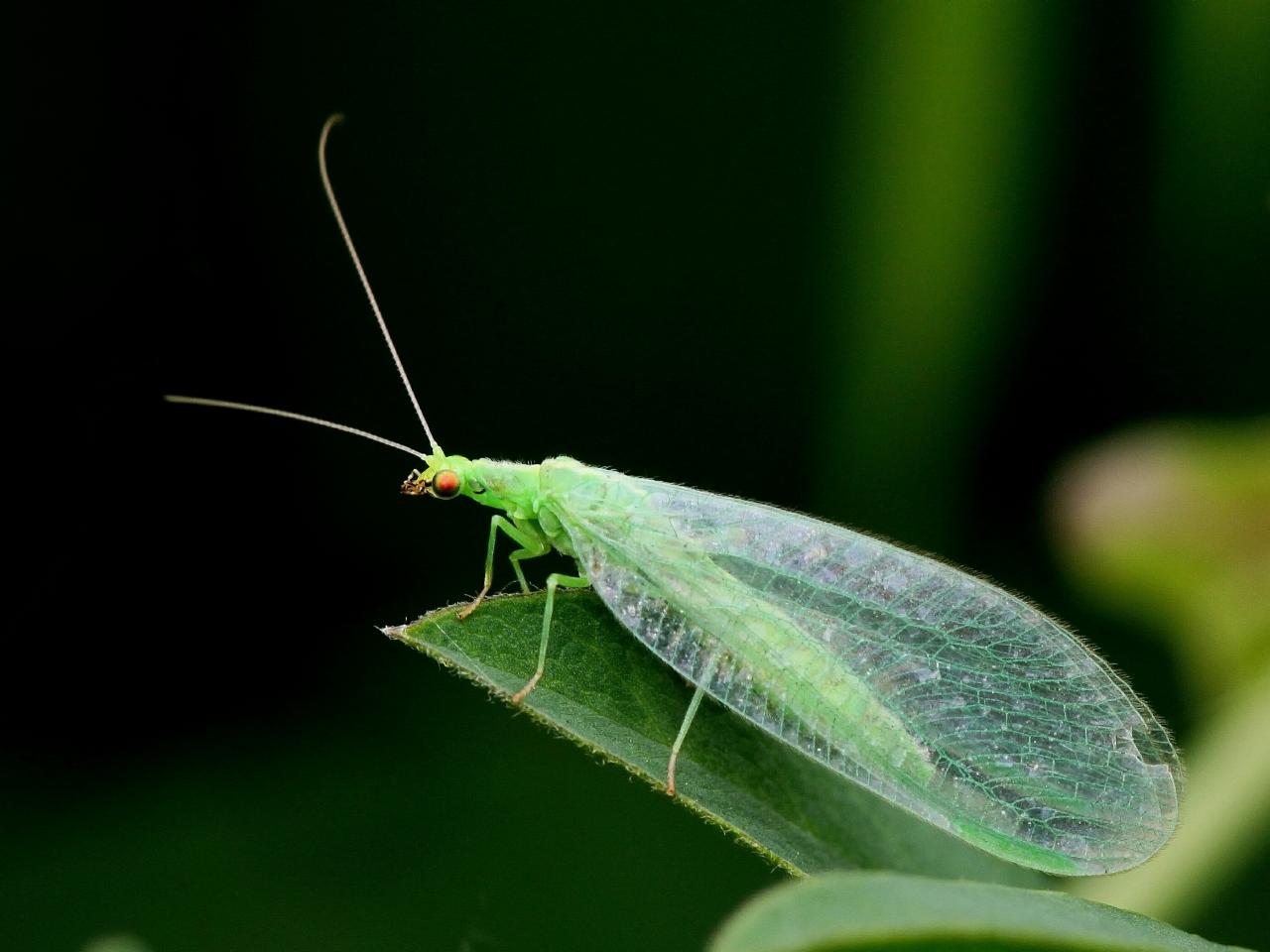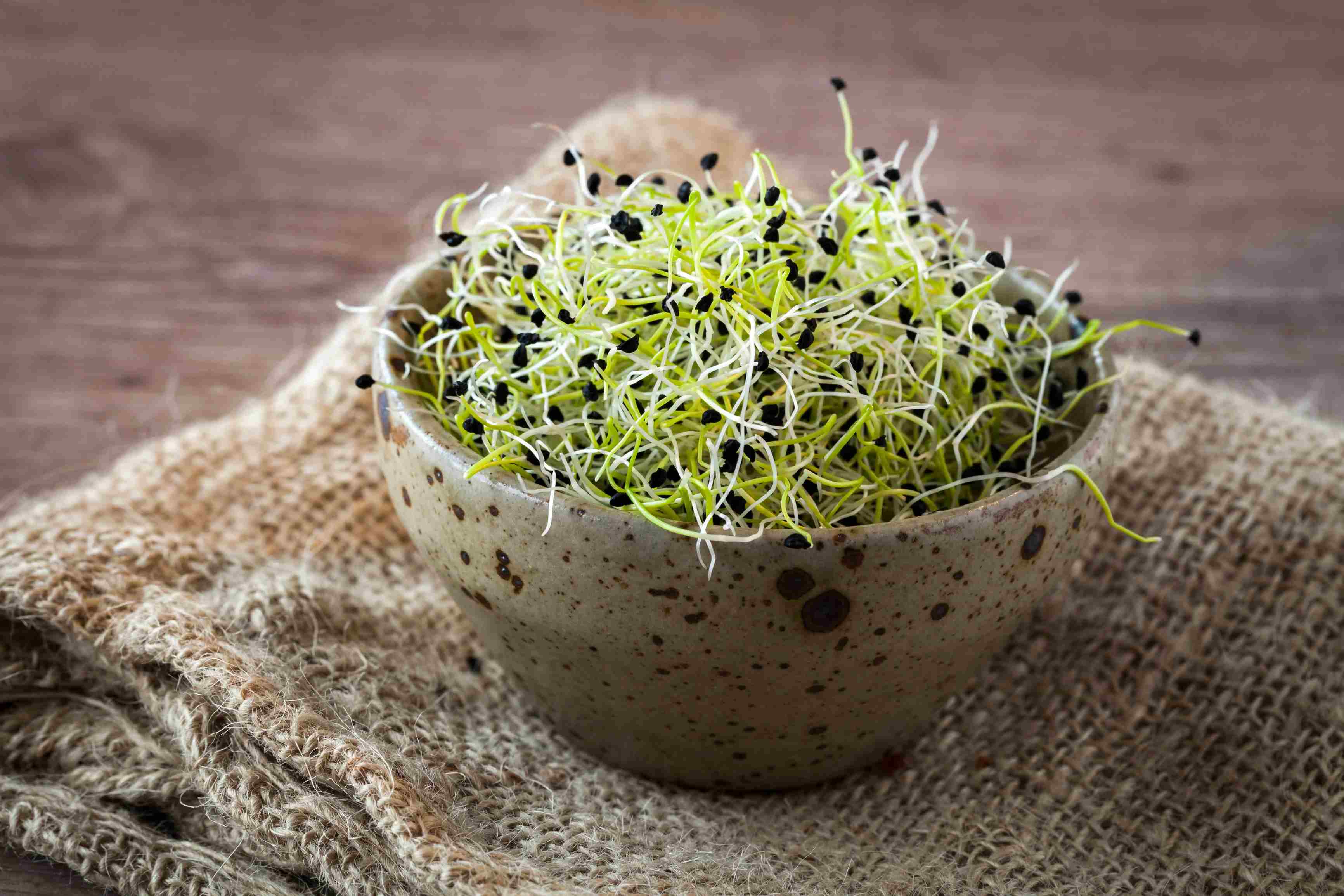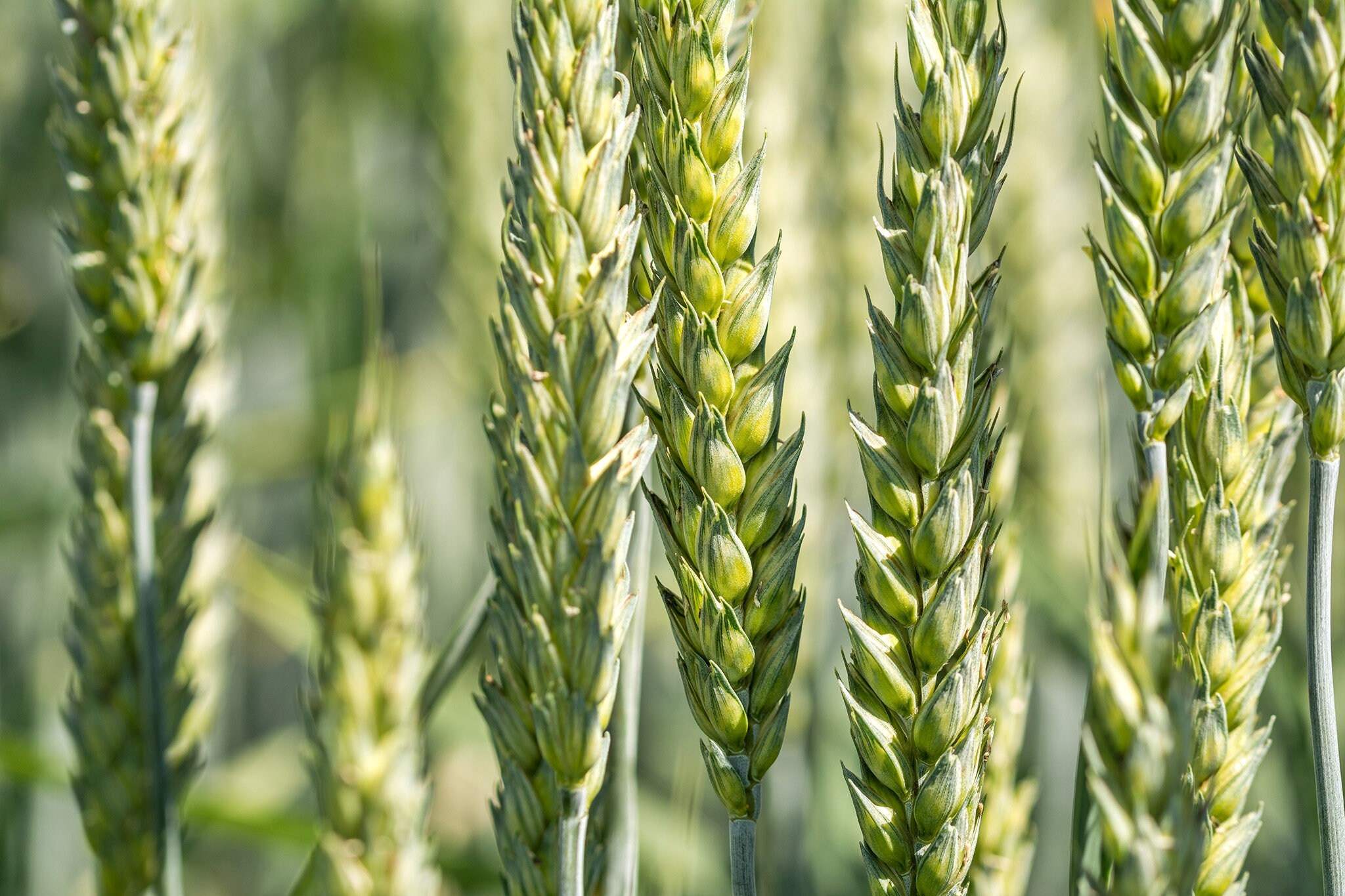Home>Reviews>Product Reviews>Where To Buy Beneficial Insects


Product Reviews
Where To Buy Beneficial Insects
Published: November 29, 2023
Looking for product reviews on where to buy beneficial insects? Find the best options and make an informed purchase decision with our comprehensive guide.
(Many of the links in this article redirect to a specific reviewed product. Your purchase of these products through affiliate links helps to generate commission for Chicagolandgardening.com, at no extra cost. Learn more)
Table of Contents
Introduction
Welcome to the world of beneficial insects! If you’re a gardener or involved in agriculture, you’ve likely encountered pests that threaten your plants. While chemical pesticides may offer a quick solution, they often come with harmful side effects to the environment and beneficial insects. That’s where beneficial insects come in.
Beneficial insects, also known as biological control agents, play a crucial role in ensuring the health and productivity of plants. These insects are natural predators or parasites of common garden pests, helping to keep their populations in check. By introducing beneficial insects into your garden or agricultural fields, you can effectively control pests without relying on harmful chemicals.
But where can you find these invaluable allies? In this article, we will explore where to buy beneficial insects and offer some tips for successfully introducing them into your garden or farm. Whether you’re an avid gardener or a professional farmer, this information will help you harness the power of beneficial insects to protect your plants and achieve sustainable pest management.
What are beneficial insects?
Beneficial insects, as the name suggests, are insects that provide valuable services to gardeners and farmers by helping to control pests and promote a healthy ecosystem. These insects act as natural predators or parasites of common garden pests, effectively reducing their populations and preventing damage to plants.
Unlike harmful pests, beneficial insects do not cause harm to crops or plants. Instead, they play a vital role in maintaining the balance of the ecosystem. They are an essential part of integrated pest management (IPM) strategies, which aim to minimize the use of synthetic chemicals in controlling pests.
There are numerous types of beneficial insects, each with its own unique feeding habits and prey preferences. Some beneficial insects feed on plant-eating insects, while others target pests like aphids, caterpillars, mites, or scale insects. By devouring these pests, beneficial insects help to keep their populations in check and prevent damage to crops.
Another category of beneficial insects includes pollinators, such as bees and butterflies. These insects transfer pollen from one flower to another, facilitating the reproduction of plants. Without pollinators, many plants would not be able to produce fruits or seeds, leading to a decline in biodiversity and food production.
It’s important to note that not all insects are beneficial. Some insects, like certain species of bees and wasps, can be harmful and aggressive. It’s essential to distinguish between beneficial insects and potential pests to ensure you are introducing the right insects into your garden or farm.
Importance of beneficial insects in gardening and agriculture
Beneficial insects play a crucial role in maintaining the health and productivity of gardens and agricultural fields. Their presence offers a range of benefits, making them an indispensable component of sustainable pest management. Let’s explore the importance of beneficial insects in gardening and agriculture.
1. Natural pest control: Beneficial insects are nature’s own pest control agents. They prey on common garden pests, such as aphids, caterpillars, mites, and scale insects, helping to keep their populations in check. By using these natural predators instead of chemical pesticides, you can effectively control pests without harming the environment or beneficial insects themselves.
2. Reduced reliance on synthetic chemicals: Chemical pesticides are known to have adverse effects on human health, the environment, and beneficial insects. By incorporating beneficial insects into your pest management strategy, you can reduce your reliance on synthetic chemicals. This promotes a healthier and more sustainable approach to gardening and farming.
3. Cost-effective solution: Over time, chemical pesticides can become less effective as pests develop resistance. This can lead to increased pesticide applications and higher costs. In contrast, beneficial insects offer a cost-effective and long-term solution. Once established in your garden or farm, they can help manage pest populations year after year, reducing the need for costly interventions.
4. Preservation of biodiversity: Beneficial insects contribute to the overall biodiversity of ecosystems. By promoting their presence, you create a more diverse and balanced environment. This, in turn, attracts other beneficial organisms, such as birds and amphibians, further enhancing the health and resilience of the ecosystem.
5. Pollination: Many beneficial insects, such as bees, butterflies, and hoverflies, are important pollinators. They transfer pollen from one flower to another, facilitating the reproduction of plants. This process is crucial for the production of fruits, vegetables, and seeds. By supporting pollinators, you ensure the growth and abundance of your crops.
6. Environmental sustainability: By adopting a holistic approach to pest management that includes beneficial insects, you contribute to environmental sustainability. This reduces the amount of synthetic chemicals released into the environment, protects water sources from contamination, and preserves natural habitats.
By recognizing the importance of beneficial insects and incorporating them into your gardening or farming practices, you can create a thriving and sustainable ecosystem that benefits both plants and humans.
Types of beneficial insects
There is a diverse range of beneficial insects that can play a vital role in pest management. Each type of beneficial insect has its own unique feeding habits and prey preferences. Let’s explore some of the most common types of beneficial insects:
- Ladybugs (Ladybirds): Ladybugs are perhaps the most well-known beneficial insects. They feed on soft-bodied pests like aphids, mites, and scale insects. Ladybugs are easily recognizable with their colorful spotted shells.
- Green Lacewings: Green lacewings are delicate insects with lacy wings. The larvae of green lacewings are voracious predators, feeding on aphids, caterpillars, and other small insects.
- Parasitic Wasps: Parasitic wasps are tiny, non-stinging wasps that lay their eggs inside or on the bodies of various pests. When the eggs hatch, the larvae feed on the pests, eventually killing them. These wasps are effective in controlling caterpillars, aphids, and other pests.
- Predatory Mites: Predatory mites are beneficial insects that feed on plant-feeding mites. They are particularly effective in controlling spider mites, which can cause extensive damage to plants.
- Praying Mantises: Praying mantises are fascinating insects that are known for their distinct appearance and hunting abilities. They prey on a variety of insects, including aphids, caterpillars, and beetles.
- Hoverflies: Hoverflies, also known as flower flies, are excellent pollinators as adults. The larvae of hoverflies feed on aphids, thrips, and other pests, making them valuable for pest control.
- Ground Beetles: Ground beetles are nocturnal insects that are known for their voracious appetites. They feed on a wide range of pests, including slugs, snails, caterpillars, and other insects.
These are just a few examples of the many beneficial insects available. Each one offers unique characteristics and is effective against specific pests. Choosing a combination of beneficial insects that target different pests can provide comprehensive pest control coverage in your garden or farm.
Where to buy beneficial insects
When it comes to acquiring beneficial insects for your garden or agricultural fields, there are several options available. It’s important to choose a reputable source to ensure that you receive healthy and viable insects. Here are some places where you can buy beneficial insects:
- Local garden centers: Many local garden centers or nurseries carry beneficial insects as part of their inventory. Check with your nearest garden center to see if they offer ladybugs, lacewings, or other beneficial insects.
- Online suppliers: Numerous online suppliers specialize in selling beneficial insects. They offer a wide selection of insects, allowing you to choose the ones that best suit your pest control needs. It’s important to read reviews and choose a reputable supplier to ensure the quality of the insects.
- Biological control companies: Some companies specialize in producing and selling beneficial insects for pest management purposes. These companies often have a wide range of options available and can provide expert advice on the best insects for your specific needs.
- Local farmers or gardener communities: Reach out to local farmers or gardening communities to see if they have any recommendations or surplus beneficial insects available for sale or exchange. These communities often have valuable knowledge and resources for acquiring beneficial insects.
Before making a purchase, consider the specific requirements of the beneficial insects you want to introduce. Some may require specific environmental conditions or have limitations on their effectiveness against certain pests. It’s crucial to understand these factors to ensure successful integration into your pest management strategy.
When buying beneficial insects, it’s important to handle them with care. Follow the instructions provided by the supplier to ensure their proper release and acclimatization to their new environment. Always release the insects when pest populations are present to ensure they have enough food sources.
Remember, beneficial insects are living organisms, and their effectiveness can vary depending on various factors. It’s essential to monitor their progress and adjust your pest management strategies accordingly. A combination of beneficial insects, cultural practices, and regular monitoring can help create a balance in the garden or farm, ensuring the long-term success of your pest control efforts.
Factors to consider when buying beneficial insects
When purchasing beneficial insects for pest management, it’s important to consider several factors to ensure their effectiveness and successful integration into your garden or agricultural fields. Here are some key factors to keep in mind when buying beneficial insects:
- Pest Identification: Identify the specific pests you want to control in your garden or farm. Different beneficial insects target different pests, so it’s important to choose the right insect species for effective pest control.
- Life Stage: Some beneficial insects are available in different life stages, such as eggs, larvae, or adults. Consider the life stage that is most appropriate for your situation, as it can affect the time it takes for the insects to become active in controlling pests.
- Release Timing: Release the beneficial insects at the right time when the target pests are present in sufficient numbers. This will ensure that the insects have ample food sources and optimize their effectiveness. Consult with the supplier or do research on the optimal release timing for your specific beneficial insects.
- Environmental Conditions: Consider the environmental conditions of your garden or farm. Some beneficial insects have specific temperature and humidity requirements for optimal performance. Ensure your environment meets these conditions to support the survival and effectiveness of the insects.
- Quantity: Determine the appropriate quantity of beneficial insects to introduce. The quantity needed will depend on factors such as the size of your garden or farm and the severity of the pest infestation. It’s important to strike a balance between introducing enough insects to control pests without overwhelming the ecosystem.
- Compatibility: Consider the compatibility of the beneficial insects with your existing pest management strategies and other organisms. Some insects may not be compatible with certain pesticides or cultural practices. Assess the compatibility to ensure the effectiveness of the beneficial insects and minimize any potential negative interactions.
- Supplier Reputation: Research and choose a reputable supplier when buying beneficial insects. Look for suppliers with positive reviews, certifications, and experience in rearing and shipping insects. A reliable supplier will provide healthy and viable insects that have a greater chance of success in pest control.
By considering these factors, you can make informed decisions when purchasing beneficial insects and increase the likelihood of successfully integrating them into your pest management strategy. Remember to regularly monitor the effectiveness of the beneficial insects and make any necessary adjustments to maximize their impact on pest control.
Tips for successfully introducing beneficial insects
Introducing beneficial insects into your garden or agricultural fields can be a highly effective method of pest control. However, for optimal results, it’s important to follow some key tips to ensure the successful establishment and effectiveness of these beneficial allies. Here are some tips to consider:
- Release them at the right time: Timing is crucial when introducing beneficial insects. Release them when the target pests are actively present in your garden or farm. This will ensure that the beneficial insects have immediate access to food sources and can start controlling the pests right away.
- Follow the handling instructions: Pay attention to the handling and release instructions provided by the supplier. Each species of beneficial insect may have specific requirements for handling, acclimatization, and release. Properly following these instructions will maximize the chances of success.
- Provide suitable habitat and food: Create a favorable environment for your beneficial insects by providing suitable habitat and food sources. Planting flowering plants, providing shelter, and avoiding the use of chemical pesticides will encourage the establishment and survival of beneficial insects in your garden.
- Monitor and assess: Regularly monitor the population dynamics of both pests and beneficial insects in your garden or farm. Assess the impact of the beneficial insects on the pest populations and make any necessary adjustments to your pest management practices based on your observations.
- Implement diverse pest control strategies: Beneficial insects are just one part of an integrated pest management approach. Combine their presence with other pest control strategies such as crop rotation, companion planting, and cultural practices. This will create a more robust and effective pest management system.
- Minimize disturbance: Once released, minimize any disturbances that may disrupt the beneficial insects. Avoid excessive pesticide use, as this can harm both pests and beneficial insects. Be cautious when pruning or cultivating the soil, as these activities can interrupt the beneficial insects’ habitat.
- Be patient: It takes time for beneficial insects to establish and build up their populations. Be patient and give them time to multiply and control the pests naturally. Avoid using chemical pesticides during this time, as they can harm the beneficial insects and undermine their efforts.
Remember, the success of introducing beneficial insects depends on various factors such as environmental conditions, targeted pests, and the overall pest management approach. By following these tips and continually observing and adapting your pest management practices, you can harness the power of beneficial insects and achieve a more sustainable and efficient method of pest control.
Conclusion
Beneficial insects are valuable allies in gardening and agriculture, offering a natural and sustainable solution to pest management. By understanding the importance of these insects and implementing them into your pest control strategies, you can reduce reliance on harmful chemicals and promote a healthier ecosystem.
In this article, we have explored what beneficial insects are and their significance in maintaining the health and productivity of gardens and agricultural fields. We have also discussed the various types of beneficial insects available and where to purchase them. It is crucial to consider factors such as pest identification, life stage, release timing, and environmental conditions when buying beneficial insects.
Additionally, we provided tips for successfully introducing beneficial insects, including the importance of timing, following handling instructions, providing suitable habitat and food, monitoring and assessment, implementing diverse pest control strategies, minimizing disturbance, and being patient.
By incorporating beneficial insects into your pest management practices and creating a balance in your ecosystem, you can protect your crops, promote biodiversity, and contribute to a more sustainable and environmentally-friendly approach to gardening and agriculture.
So why wait? Embrace the power of beneficial insects and take your pest control efforts to the next level. Start exploring the options and reap the rewards of a healthier, more vibrant garden or farm.









